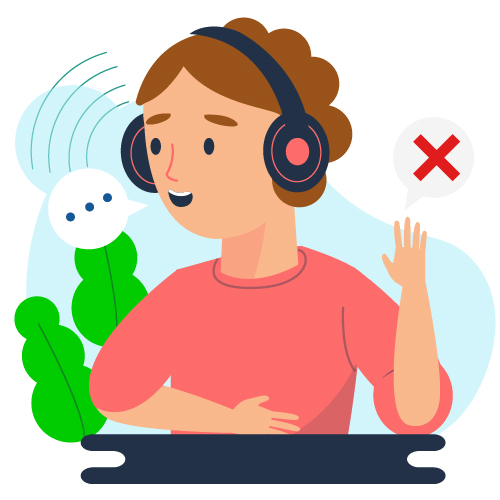HOW TO PREPARE FOR THE IELTS COMPUTER-BASED EXAM
Lets know a little bit about the IELTS exam before pondering how to prepare for a computerized version of the test. One of the most widely used and well regarded tests to measure English language skills throughout the world is the IELTS exam. It is essential to enroll in higher education programmes and even obtain employment in countries that speak English. The paper-based test and the computer-based test are the two IELTS variants, respectively.
Many test takers frequently ponder the advantages of taking the IELTS in one format as opposed to the other when taking the exam. Technology has made it possible to administer tests in formats other than on paper. For the Listening, Reading, and Writing portions of IELTS, computer-delivered assessment is now available. It will still be face-to-face with an examiner for the Speaking segment. Common names for this kind of examination are CD IELTS (Computer-delivered IELTS) and CBT ( IELTS computer based test).The computer-based test is administered using laptops or computers, which is the only significant change. While the Speaking portion is done face-to-face with an IELTS examiner, the Listening, Reading, and Writing sections are completed on a computer.
The advice provided below is primarily based on what has been successful with previous students and may benefit you:
TEXT SIZE AND BACKGROUND COLOR CAN BE CHANGED
Change the font size and background color to make the text easier on the eyes. Since you’ll be staring at your screen for a while, it can ease eye strain and make it easier to focus.
UTILIZE THE HIGHLIGHTING FEATURE
The ability to highlight material to assist you concentrate on where you think the answer is or whatever area you might need to refer back to later is a significant benefit of the computer-based IELTS. Simply right-click the text you want to highlight and choose highlight.
KEEP ON YOUR HEADPHONES
Put on your headphones as soon as you get them. Naturally, you will need them for the hearing exam, which is frequently the first one. However, if you keep them on, they will muffle any distracting noises made by other applicants.
It may be very noisy and distracting to have a room full of applicants working quickly on keyboards—certainly not what you need! You can sit in your own concentrated world while wearing headphones, which will enable you to stay composed throughout the test.
NEVER USE THE CTRL + F KEYBOARD SHORTCUT.
Unfortunately, you cannot ‘discover’ certain words in texts with this feature. The ability to highlight is permitted on computers, but you cannot bring a highlighter into an IELTS paper-based exam, which we find odd. This would provide candidates taking the computer-delivered test a choice that users of paper-based tests do not have and so cannot be permitted.
MAKING AN EARLY MOVE WILL SAVE TIME
If you’re prepared, you can skip forward in the listening portion of the test. Therefore, you may go on to the following questions early if you have strong listening skills, complete all the questions, and don’t need to double-check anything.
So that you are hyper ready for when that part of the audio is played, you may then read those questions and speculate on potential replies.
Additionally, you may review any of your responses from that part of the exam at any time. You can only move backwards within the same part, not from the writing portion to the reading section.
THINGS TO BE CONSIDERED WHILE TAKING AN ONLINE IELTS EXAM
READING SECTION
- The reading text will be on the right side of the screen, and the questions will be on the left. You’ll find it easier to understand the text and the questions if you do this.
- If a word or sentence strikes you as important while you are reading, you may highlight it by right-clicking and selecting “Highlight.” You are not permitted to use a highlighter on the paper-based test. One benefit of the computer-based test is this.
- If you choose, you may also raise the text size.
- To avoid mistakes, use CTRL-C (Copy) and CTRL-V (Paste) to copy and paste from the provided text.
SPEAKING SECTION
- For both the paper-based and computer-based IELTS exams, the speaking test is the same. This test, which is conducted by a human examiner and resembles a discussion with a person, will be conducted.
- Always smile since it will make your speech clearer and show that you are confident. Speak with confidence and a cool head.
- Refrain from employing complicated terms needlessly. Having a strong vocabulary is usually a plus, but you shouldn’t employ certain terms only for their own sake.
- You could be required to discuss nearly anything, such as your views on current events, your family, or your hobbies. Make sure you are up to date on current events, and at home, practice speaking in front of people.
- You only have one opportunity to listen. Either an Australian or a British accent will be included in the audio. With the use of practice exams, make sure you have some practice listening to their pronunciations.
- With the audio, be patient. You’ll discover the solutions you were seeking for. It might come right at the start or very end. But you must maintain concentration.
- You will have 10 minutes to transfer your answers from the question paper to the answer paper during the paper-based test. But with the computer-based test, that is not the case. You have to enter in your answers as you go on a computer test. The final two minutes are all you get to review your responses. So try to avoid grammar and spelling mistakes
LISTENING SECTION
- The format of the computer-based IELTS is not much different from that of the standard IELTS test. The part lasts 30 minutes in total.
- You’ll only have one chance to hear the audio with either an Australian or a British accent. Make sure you prepare by hearing these accents and pronunciations in your practice exams.
- You will ultimately find all the answers to the questions at the beginning or finish if you always practice patience. Maintain your attention throughout this part, though.
- You have 10 minutes to transfer your responses from the question paper to the answer paper for the test that is administered on paper. On the other hand, the computer-based test requires you to continue entering in your responses as you go. After that, you have just two minutes to review your responses. So, when typing, be cautious to prevent mistakes in grammar and spelling.
WRITING SECTION
- Knowing that the computer-based IELTS will assess your typing abilities can help you prepare for the exam. Similar to the paper-based test, the timelines and conditions apply. The response input is what makes a difference. Since you don’t have to worry about the word count or your handwriting being readable at first, it could appear simple. However, prolonged typing may become tiresome. As a result, you should focus on increasing your accuracy-free typing speed.
- You won’t have much time to go over your responses. So, while typing quickly, watch out for mistakes.
- You may easily alter what you’ve written; simply select the entire line, then use the backspace or delete keys to remove it. Throughout the exam, you can also use the copy-paste function.
- You will need paper and a pen to organize your essay. Try to structure it as much as you can, make a list of the main ideas, and get ready to type everything properly.



